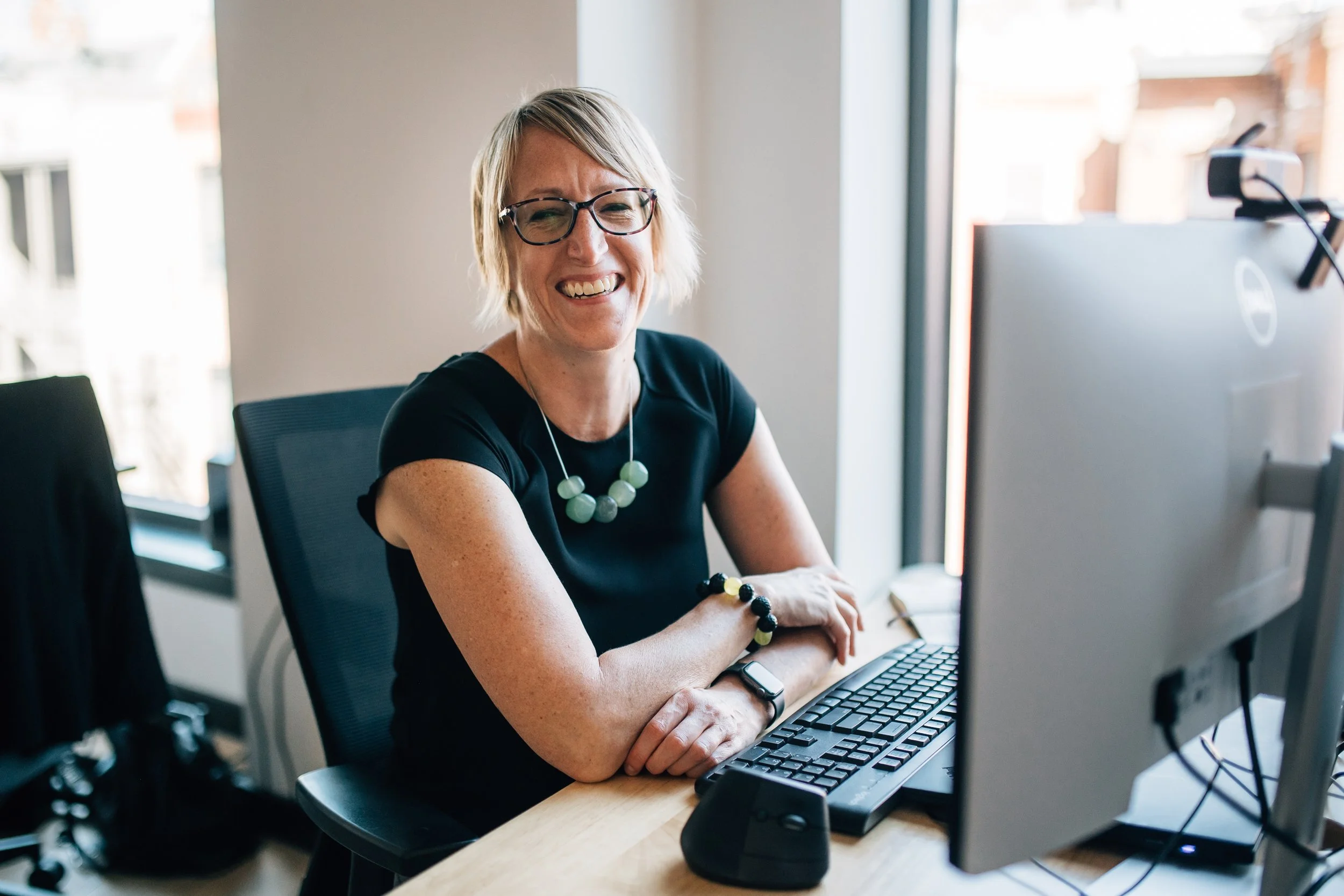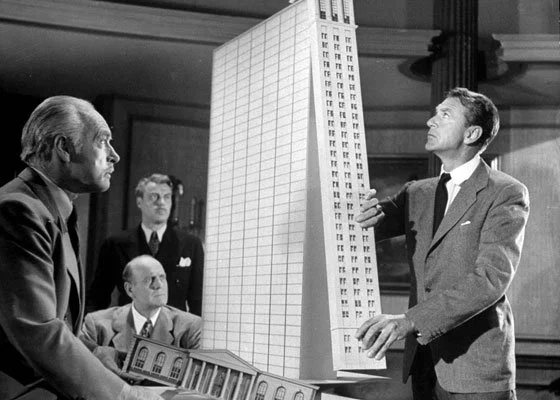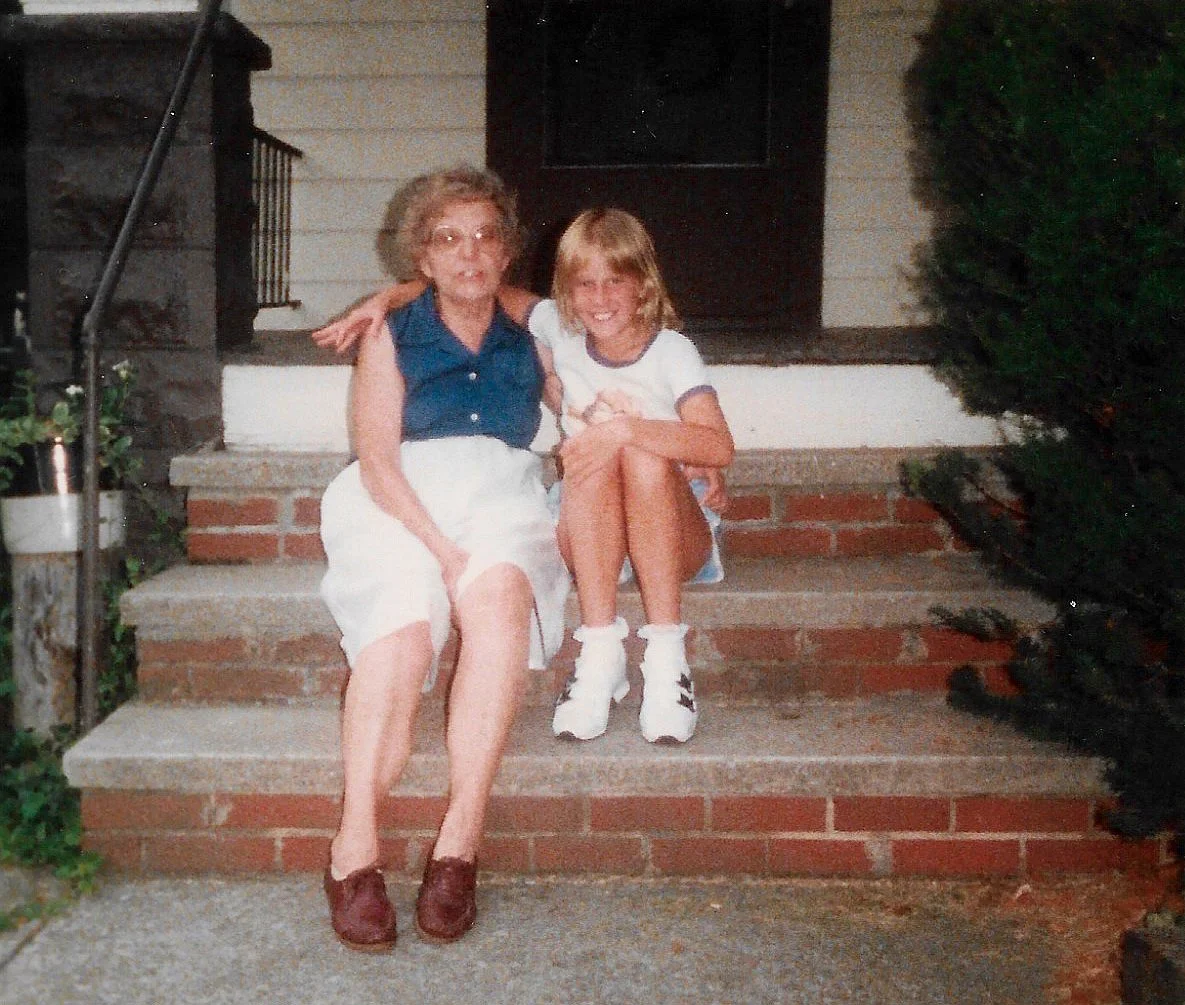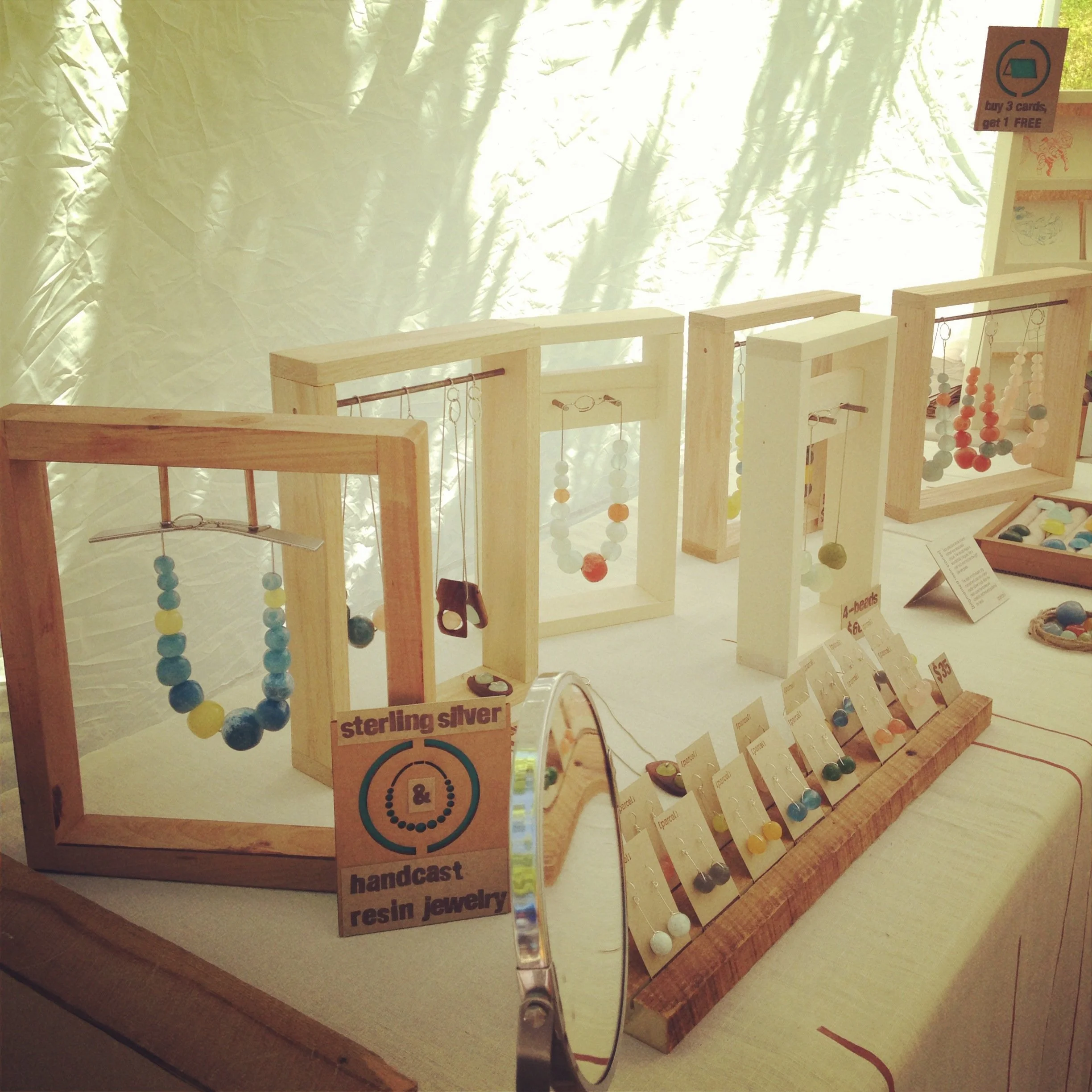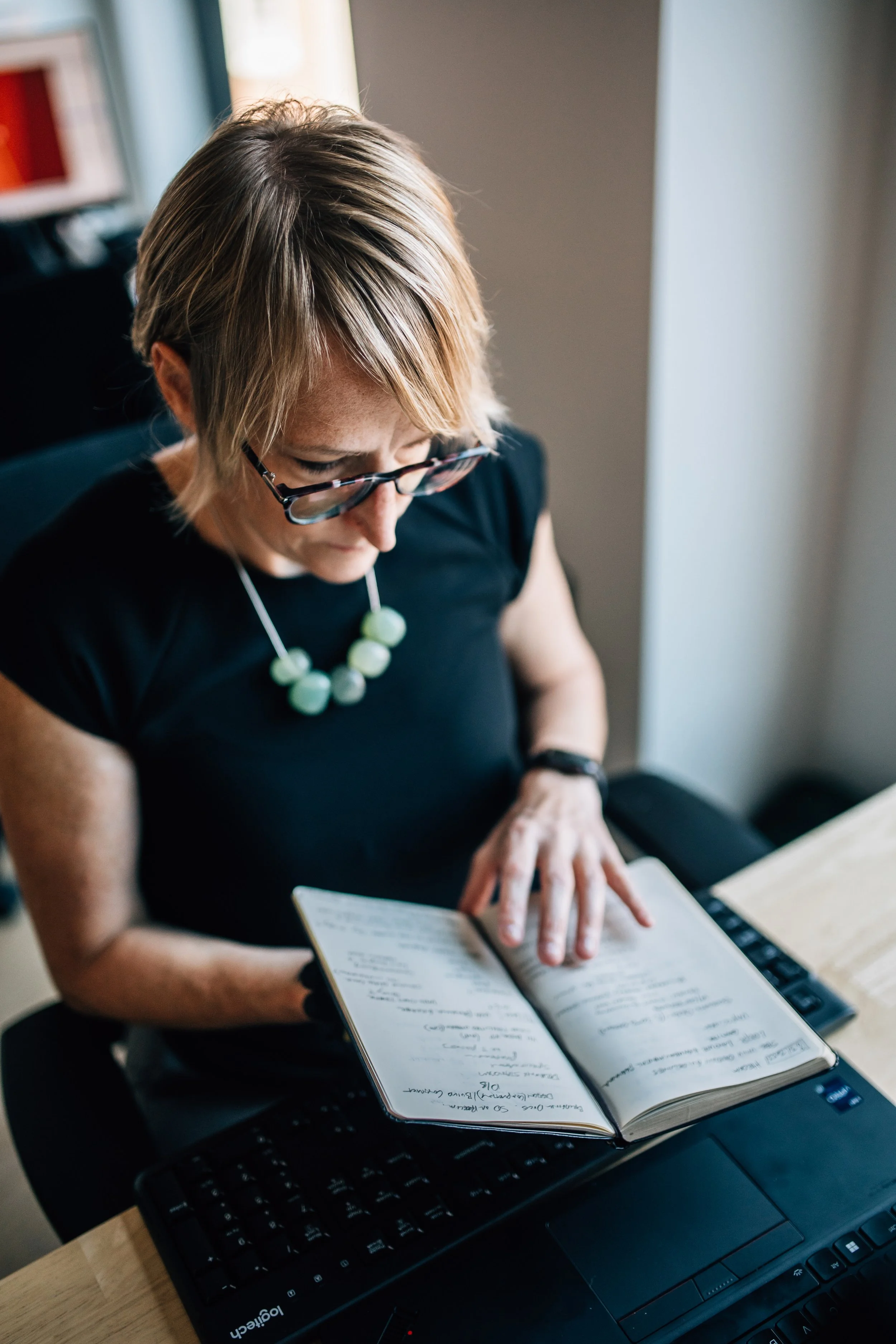Designers at Their Desk: Whitney Hudson

Designers at Their Desk is a monthly feature showcasing a conversation with one of our staff, their unique outlook on architecture and design, hobbies, interests, and their current projects.
Whitney working in our DC office, although her typical desk is in her Charlottesville home!
In this edition of Designers at Their Desk, we sit down with Whitney Hudson, a senior project architect in EskewDumezRipple’s DC studio, to explore her journey through the world of architecture, her creative process, and the passions that drive her both in and out of the studio.
Whitney's path to becoming an architect began in college, where she first realized her passion for architecture. Whitney earned her Bachelor of Environmental Design degree from the University of Colorado Boulder and went on to pursue a Master of Architecture degree at the University of Virginia.
After completing her education, Whitney delved into the professional realm, beginning her career honing her skills in civic renovation/addition projects. Over the years, she ventured through various firms, gaining invaluable experiences in a wide variety of project types, including libraries, higher education, retail, multifamily housing, exhibit design, and project management.
One notable highlight of Whitney's career was her time at Charles Rose Architects in Boston. There, she spearheaded a groundbreaking project—a net-zero energy transit center in Greenfield, Massachusetts—a testament to her commitment to sustainable design and community impact.
“The transit center was a net zero energy building that, because of the government funding, had to utilize only American-made products; it required a lot of research and taught me a lot. I ran the project from beginning to end, working with Charles (Rose) on initial sketches/models all the way through CA. I worked with the clients, attended all job-site meetings, and, as we neared the beginning of construction, we even helped with furniture selection and custom built-in pieces, which was a first for me.”
John W. Olver Transit Center in Greenfield, Massachusetts, from Charles Rose Architects. Photo credit to Charles Rose Architects.
What Whitney values most about her work is the ability to see a project through from its conceptualization to its realization. For her, every line drawn on paper embodies a unique concept, and understanding the rationale behind each design decision is paramount.
“One of the things I love the most about what I do is the idea that you could draw a little squiggle on a paper with a rectangle around it and that drawing is your concept. I like that, when you work on a project all the way through, you understand the original concept so well that you can answer any question during the process because you know why it was designed in that specific way. You don’t have to know what the squiggle means right now. We are figuring that out as we go along.”
Whitney believes that reasoning can impact the project. She says, “It ends up being a stronger project if there’s a real reason behind all of the things that you’re deciding, and when you can finally walk in a building and understand how to go through the space or understand what parts of it are important visually, that shows a strong basis of reason in the design.”
But she also knows that reasoning must be paired with respect for others working on the project. “Someone told me early on in my career to avoid the mistake that architects can make of acting like you know everything when visiting a job site,” Whitney says. “The people working there have an expertise, and you have to respect that they know how to build. You are there to talk about why visual elements are important, but finding a solution to building issues with an air of respect for the people involved is important, too.”
She explains that she, and others in the industry, actively attempt to avoid the “archetypical” architect.
Stereotypical architects featured in the movie, The Fountainhead (1949).
“Anytime you see an architect in a movie, they show up in a limo with a crazy suit on, and they point at things while holding a roll of drawings and demanding changes to the project. That’s not really how it is,” she says. “It’s more of a conversation. Learning that early on made me less nervous on the job site and gave me a better understanding of the process of getting a project built.”
Whitney attributes a lot of creativity to her childhood and her paternal grandmother. She said, “I really liked art from the time I can first remember. My grandma lived near us, and she used to take me to the art store to pick out supplies for my birthday. She taught me to crochet and quilt, and she taught me how to do things the right way, to have patience when you are getting started on a project, which is still true for me today with my design process.”
Whitney and her grandmother, her first crafting partner.
Her grandmother instilled a sense of experimental craftiness that still continues today, both inside and outside of the studio. “I sometimes sold things I made at craft fairs, like jewelry, screen printed t-shirts and onesies, greeting cards, and other things like that,” Whitney states.
Whitney’s handmade products in her craft booth she sets up at fairs around Charlottesville.
When she is not crafting or designing, Whitney says she can usually be found at a sports game of some type. “My partner and I were assistant coaches for our kids’ baseball team, and we are always involved in some way. So, I am spending a lot of time at games with my kids on the weekends,” she explains. She also takes care of her two dogs, one that she claims is “more like a potbelly pig” than a pug and one that trains in hunting trials.
Whitney’s dedication to respectful working relationships and designing projects that “make sense” have provided an incredible asset for the EskewDumezRipple team, especially for our growing DC studio. Her creativity and thoughtfulness contributes to every charette, and we couldn’t be happier to highlight her as a designer and leader for our team, especially after celebrating her one-year anniversary at EDR.
